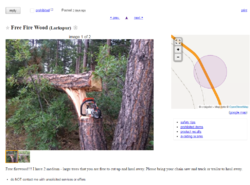I have a few trees I've cut down on my property mostly because they were either dead or crowded, and only for firewood secondarily. I'd still consider myself quite new to it however, and I've only fell a couple pines between 8-14 inches in diameter 2 feet off the ground.
I understand you only want your notch cut to be about 1/3 of the width of the tree, but what I don't understand is why. At first glance you'd think you'd want it to be about half to help ensure the tree fell the direction you wanted.
I'm also having trouble making the two cuts of my notch cut meet nicely perpendicular to the intended fall direction. I'm typically off by 10-15 degrees. Is this just a case where practice makes perfect, or is there a specific technique to it?
I understand you only want your notch cut to be about 1/3 of the width of the tree, but what I don't understand is why. At first glance you'd think you'd want it to be about half to help ensure the tree fell the direction you wanted.
I'm also having trouble making the two cuts of my notch cut meet nicely perpendicular to the intended fall direction. I'm typically off by 10-15 degrees. Is this just a case where practice makes perfect, or is there a specific technique to it?


